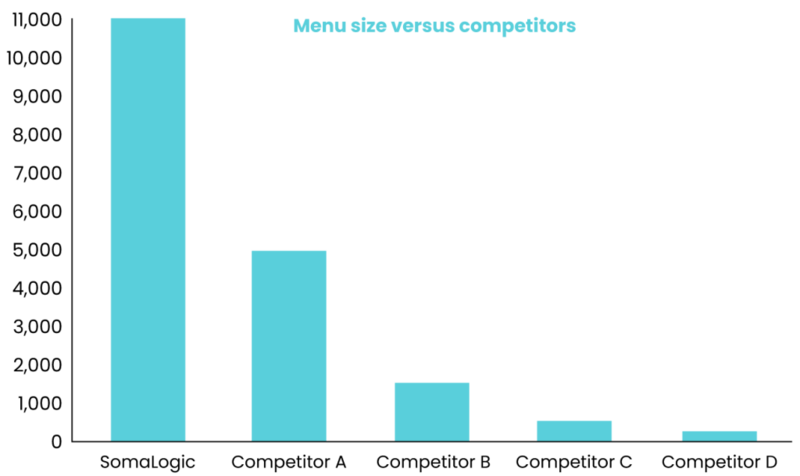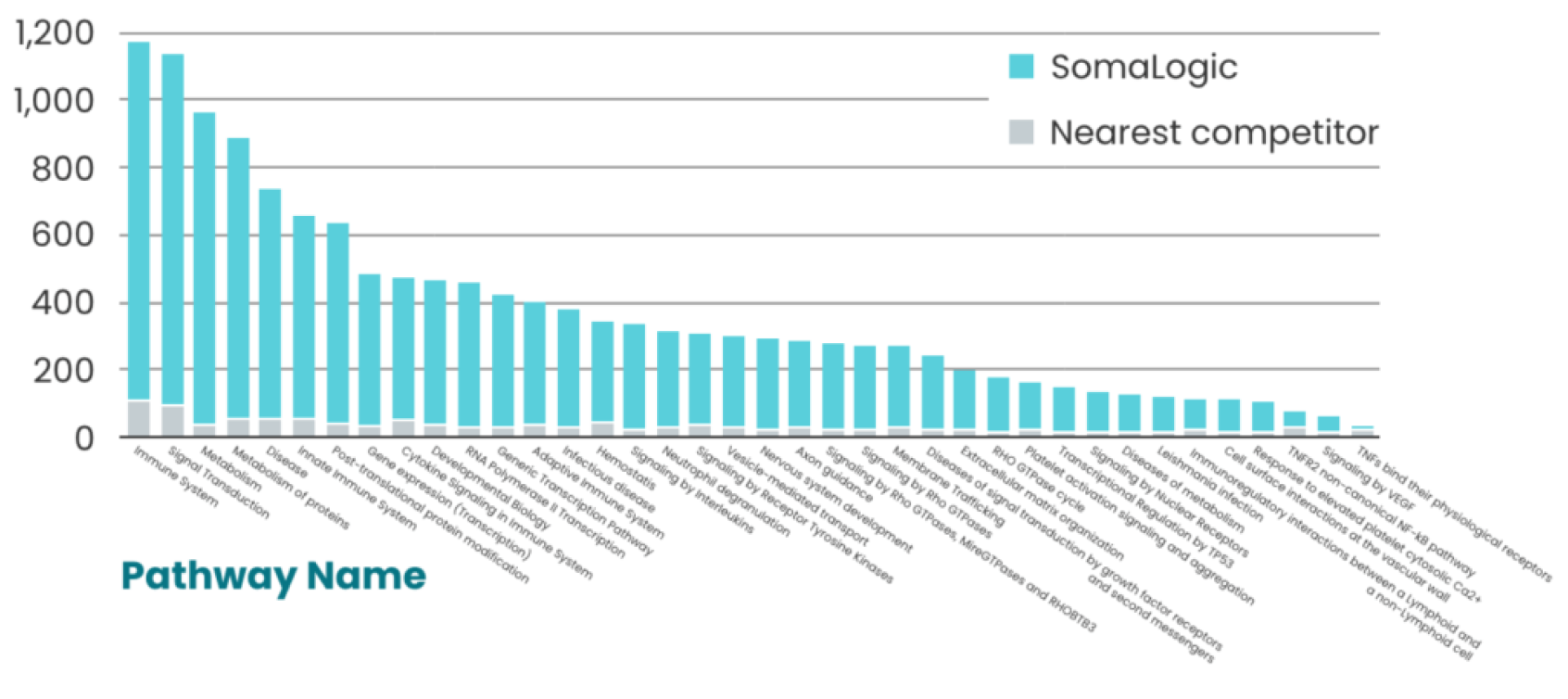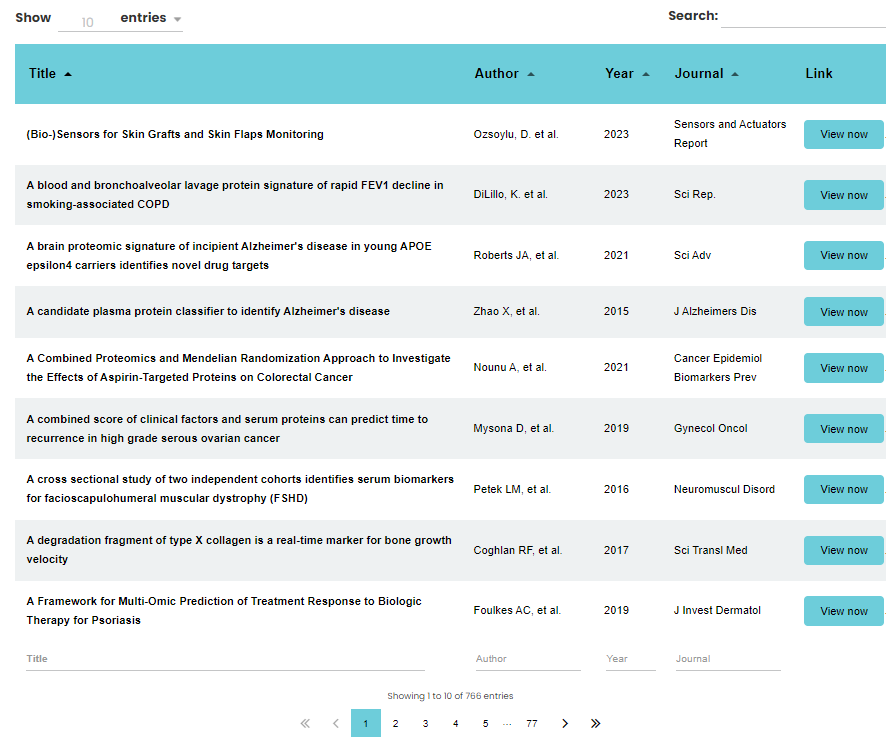In CITOGEN, we perform proteomic analyses using SomaLogic technology. The SomaScan® assay is the first and only platform capable of measuring 11,000 proteins from a minimal sample volume.
This represents more than double the number of proteins than any other proteomic analysis platform, covering a greater number of biological pathways compared to any other available proteomic assay.
The SomaScan® assay utilizes modified aptamers (SOMAmer®, (Slow Off-rate Modified Aptamer) to provide highly reproducible measurements of 11,000 circulating proteins from a single 55-µL sample.

11000 PROTEINS

55-µL SAMPLE

REPRODUCIBLE
(~5% CV)

SPECIFIC

DYNAMIC
(10-log range)

SENSITIVITY (fM)
What are SOMAmer® reagents?
The SomaScan® Assay uses Slow Off-Rate Modified Aptamers (called SOMAmer® Reagents) that are protein capture reagents with chemically modified nucleotides that enhance the specificity and affinity of protein-nucleic acid interactions compared to standard aptamers and antibodies.
- Unique reagents: SOMAmer® Reagents are synthetic, ssDNA sequences with protein-like appendages that tightly bind a specific protein target.
- Stable and quantifiable: For discovery, validation, and development purposes, SOMAmer® reagents offer consistency, enabling unparalleled reproducibility unlike antibodies.
- Selected by SELEX: This method involves selecting from a genotypic library the oligonucleotide that binds most strongly to target proteins, based on their shape and charge complementarity. Through iterative rounds of amplification and selection, aptamers with superior binding and capture properties are chosen, comparable to those of antibodies.

For what can SomaScan be used?

How does SomaScan work?
SOMAmer® reagents are incubated with the sample, leading to the formation of highly specific complexes between SOMAmer® and proteins. Each SOMAmer® is subsequently released from its target protein and undergoes competition with polyanionic molecules to prevent nonspecific binding. Because SOMAmer® reagents have a low dissociation constant, proteins remain bound to them. Fluorophores are measured after hybridization with complementary sequences on a microarray chip. The readout in relative fluorescent units (RFU) is directly proportional to the amount of target epitope in the initial sample.
SOMAmer Reagents (purple) are synthesized with a fluorophore, photocleavable linker, and biotin.
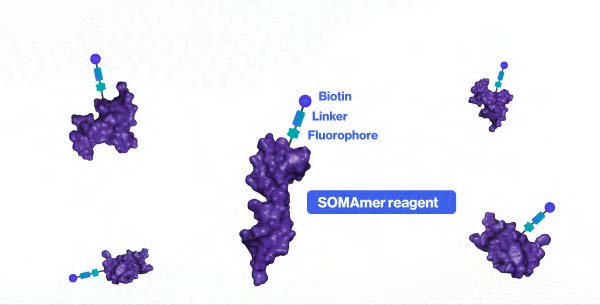
SOMAmer Reagents bound to streptavidin beads are used to capture proteins from a complex mixture of proteins (tan).
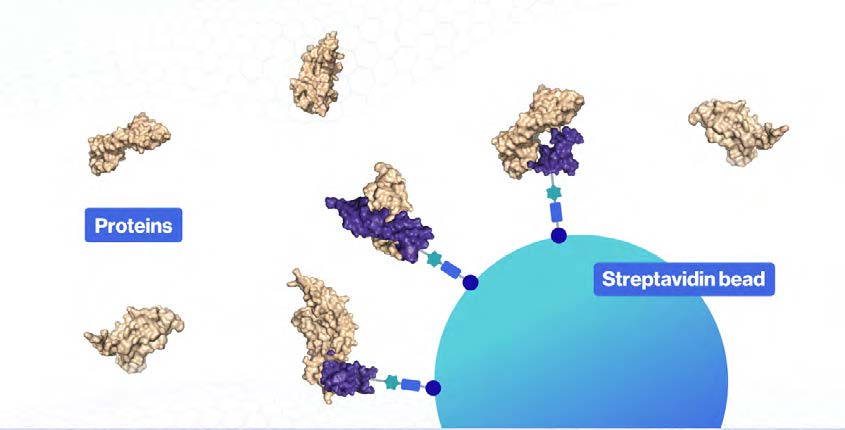
Unbound proteins are washed away, and bound proteins are tagged with biotin.
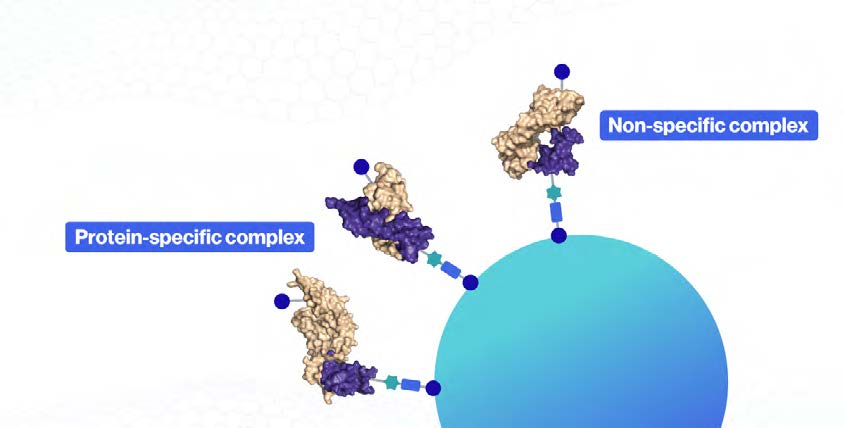
UV light breaks the photocleavable linker, releasing complexes back into solution.
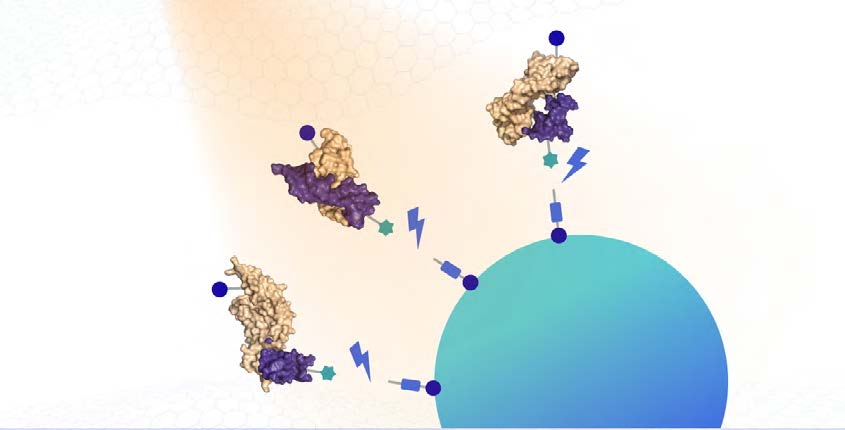
Non-specific complexes dissociate while specific complexes remain bound.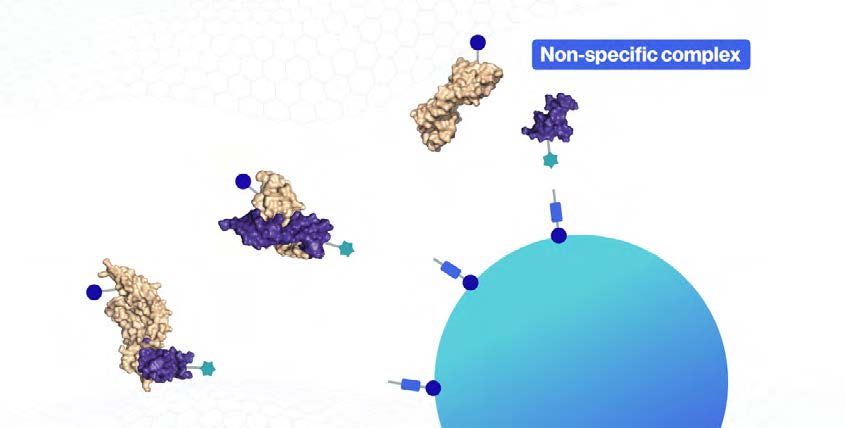
A polyanionic competitor (green) prevents rebinding of non-specific complexes.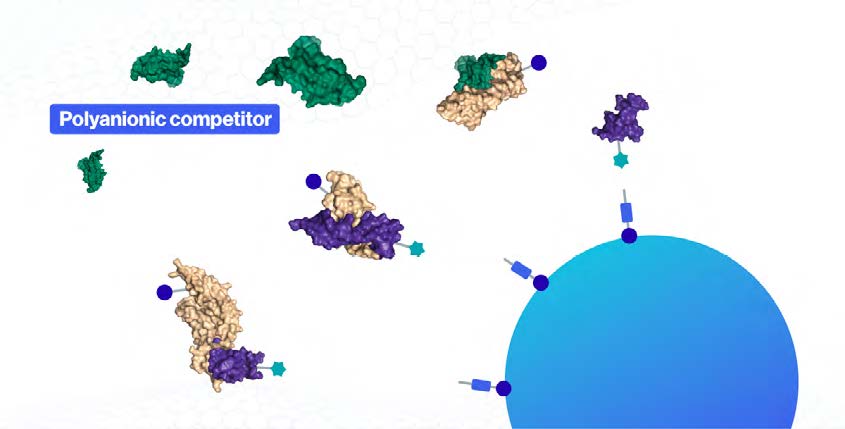
Biotinylated proteins (and bound SOMAmer Reagents) are captured on new streptavidin beads.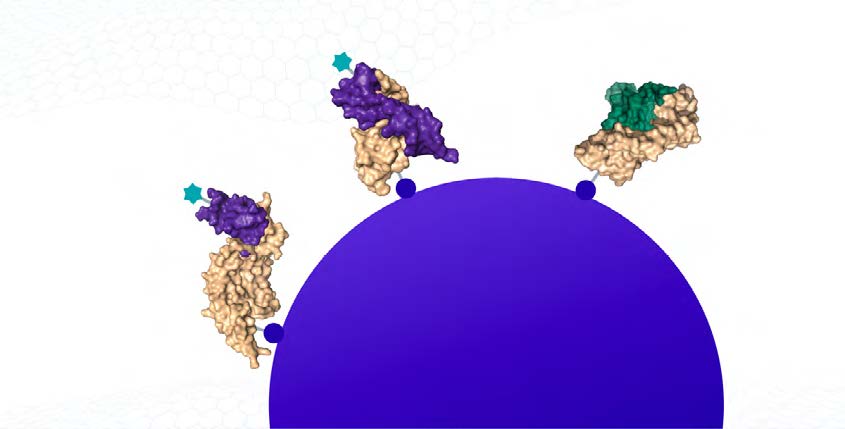
SOMAmer Reagents are released from the complexes by denaturing the proteins. Fluorophores are measured after hybridization to complementary sequences on a microarray chip. The fluorescence intensity detected on the microarray is related to the amount of available epitope in the original sample.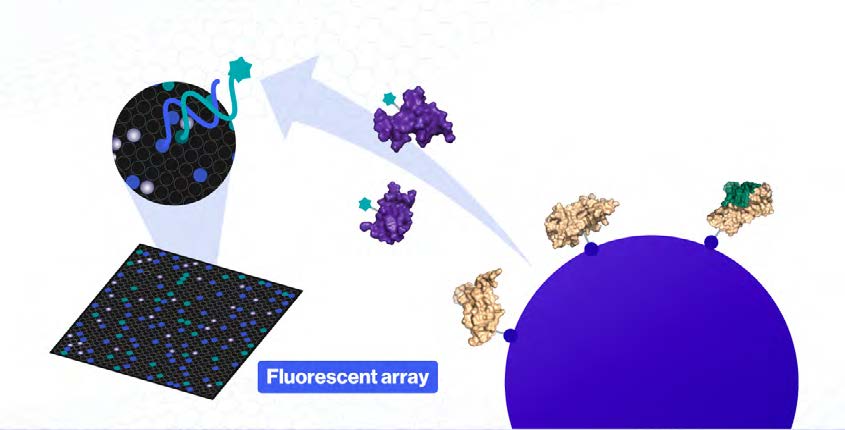
Learn how the SomaScan® Assay works
What is the process?

Explore the SomaScan Menu
Key aspects
Reproducible
Because the SomaScan Assay does not rely on polyclonal antibodies, which are variable, SomaScan data achieves coefficients of variation much lower than industry standards. Additionally, it is the only platform that can be seamlessly used for the entire biomarker research pipeline from discovery to development consistently over time.
Specific
While most protein assays rely on a variation of the ELISA sandwich approach, the SomaScan Assay relies on kinetics: non-specific interactions dissociate faster. Tests have confirmed minimal cross-reactivity with closely related proteins.
Dynamic and Sensitivity
A tiered dilution approach is used to measure proteins of very high abundance and very low abundance separately, such that a total range of 10 logs can be measured from just 55 μL of plasma or serum.
| Typical Protein Levels | fM-pM | nM | uM |
| Plasma dilution | 1:5 | 1:200 | 1:20000 |
| Somámeros | 81% | 16% | 3% |
11000 proteins
By far the largest commercial proteomic assay on the market, the SomaScan Assay provides 11,000 total protein measurements including 10,000 unique human proteins measured.
Key SomaLogic Publications
Use the interactive table below to find publications of interest. Filter your search by entering a keyword in the “Search” line below. Or sort your results by year, journal, author, or title.

